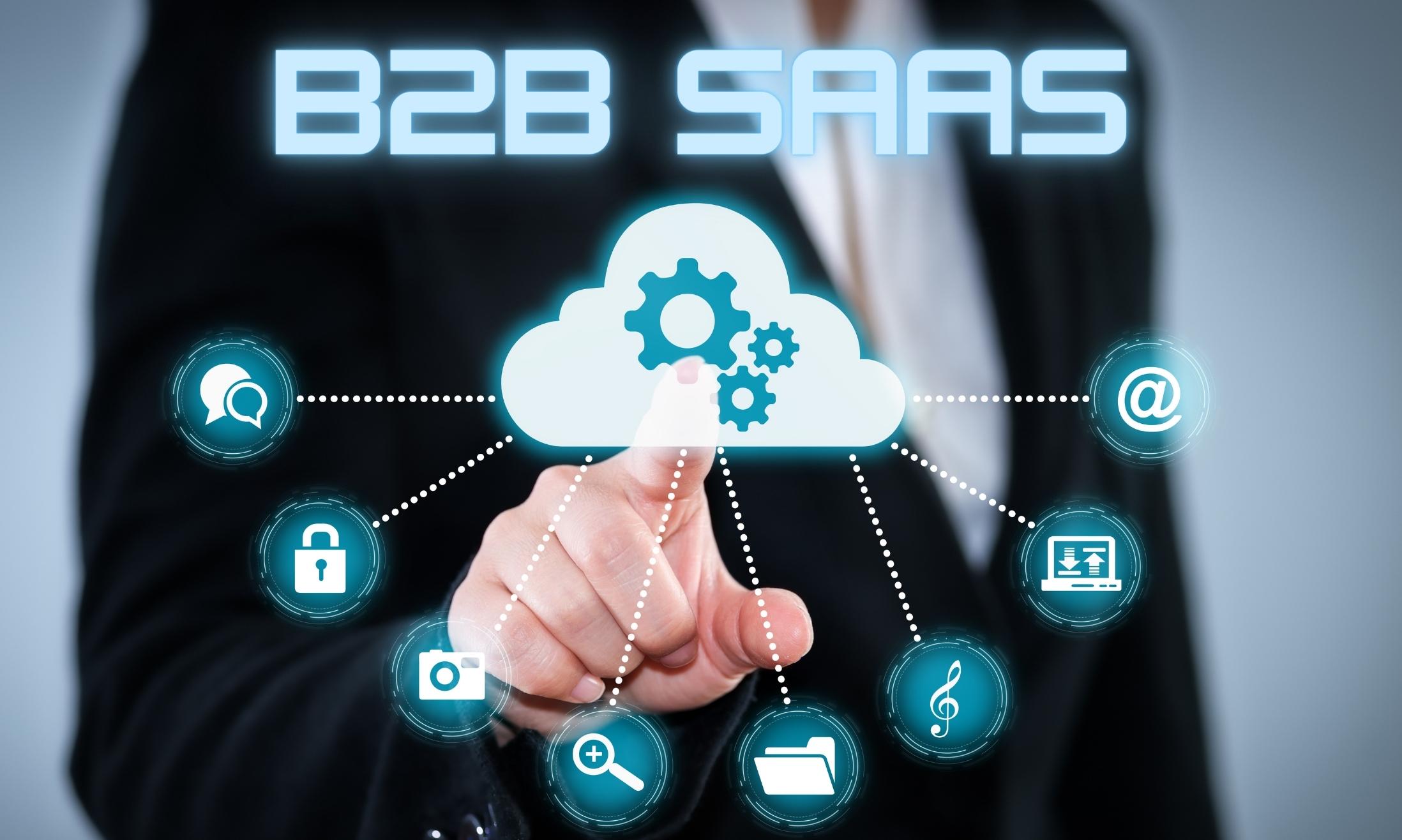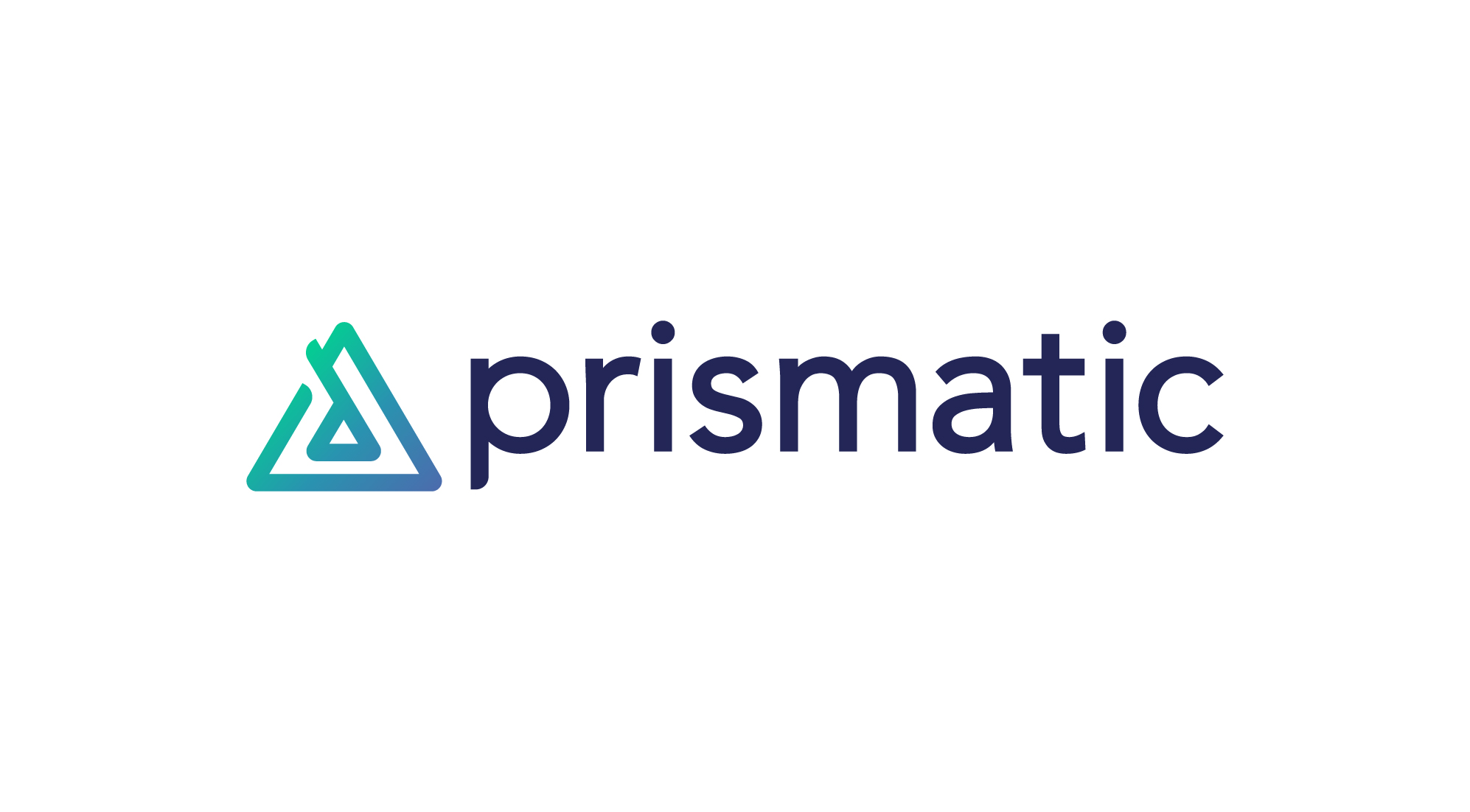Introduction
Welcome to the world of B2B SaaS! In today’s digital era, businesses are increasingly turning to software-as-a-service (SaaS) solutions to streamline their operations, boost efficiency, and drive growth. But what exactly is B2B SaaS, and why is it gaining so much popularity?
B2B SaaS, or Business-to-Business Software-as-a-Service, refers to the delivery of software applications over the internet to businesses. Unlike traditional software, which is installed on individual computers or servers, B2B SaaS platforms are hosted in the cloud and accessed through a web browser. This model offers a range of benefits, including lower upfront costs, easy scalability, and seamless updates and maintenance.
The rapid adoption of B2B SaaS can be attributed to its key characteristics. First and foremost, B2B SaaS is subscription-based, with businesses paying a recurring fee to access and use the software. This allows for greater flexibility and cost-effectiveness, as users can choose the features and pricing plans that best suit their needs.
Additionally, B2B SaaS is typically accessed through a multi-tenant architecture, which means that multiple customers share the same instance of the software while maintaining data isolation. This shared infrastructure allows for efficient resource utilization and easier collaboration between users.
Another defining characteristic of B2B SaaS is its focus on solving specific business challenges. These solutions are designed to address the unique needs of businesses, offering industry-specific functionalities and customizable features. Whether it’s sales and marketing, customer relationship management, project management, or human resources, there is a B2B SaaS solution available for virtually every business function.
So, what makes B2B SaaS so appealing to businesses? The benefits are manifold. One of the most significant advantages is the cost savings associated with B2B SaaS. With no need for expensive hardware or software maintenance, businesses can significantly reduce their upfront costs. The subscription-based pricing model also allows for better budgeting and cost predictability.
Definition of B2B SaaS
Business-to-Business Software-as-a-Service, or B2B SaaS, is a software distribution model in which businesses license software applications on a subscription basis. This means that instead of purchasing and installing software on their own servers or computers, businesses access the software over the internet through a web browser. B2B SaaS providers host and maintain the software on their servers, allowing businesses to focus on utilizing the software rather than managing infrastructure.
B2B SaaS differs from traditional software in several ways. Firstly, it is cloud-based, meaning the software is hosted on remote servers and delivered over the internet. This eliminates the need for businesses to invest in and maintain their own hardware and IT infrastructure. Instead, businesses can rely on the expertise and resources of the B2B SaaS provider, who takes care of server maintenance, security, updates, and backups.
In addition to being cloud-based, B2B SaaS operates on a subscription model. Businesses pay a recurring fee, usually on a monthly or annual basis, to access and use the software. This subscription fee typically includes ongoing support and updates, ensuring that businesses always have access to the latest features and improvements.
One of the key advantages of B2B SaaS is its scalability. As businesses grow or their needs change, they can easily adjust their subscription and access additional features or users. This flexibility allows businesses to scale their software usage in line with their growth, without the need for significant upfront investments or complex migration processes.
Another defining characteristic of B2B SaaS is its multi-tenant architecture. In this model, multiple businesses or users share the same instance of the software, while maintaining data isolation and security. This shared infrastructure ensures efficient resource utilization and cost savings for both the B2B SaaS provider and its customers.
To sum up, B2B SaaS is a software distribution model where businesses subscribe to cloud-based software applications instead of purchasing and installing them on their own servers. With its subscription-based pricing, scalability, and multi-tenant architecture, B2B SaaS offers businesses flexibility, cost savings, and the ability to focus on utilizing the software to drive their growth and success.
Key Characteristics of B2B SaaS
B2B SaaS, or Business-to-Business Software-as-a-Service, is characterized by several key features that set it apart from traditional software models. These characteristics contribute to its growing popularity among businesses of all sizes and industries. Here are the key characteristics of B2B SaaS:
- Cloud-Based: B2B SaaS is hosted in the cloud, meaning the software and its associated data are stored on remote servers and accessed over the internet. This eliminates the need for businesses to maintain their own servers or IT infrastructure, as the B2B SaaS provider handles all the technical aspects of hosting and maintenance.
- Subscription Model: B2B SaaS operates on a subscription basis, where businesses pay a recurring fee to access and use the software. This subscription fee typically includes ongoing support, updates, and maintenance, ensuring that businesses always have access to the latest features and improvements.
- Scalability: B2B SaaS offers scalability, allowing businesses to easily adjust their subscription and scale their usage as their needs change. Whether it’s adding more users, accessing additional features, or expanding into new markets, businesses can adapt their software usage without the need for significant upfront investments or complex migration processes.
- Multi-Tenant Architecture: B2B SaaS platforms are designed with a multi-tenant architecture, which means that multiple businesses or users share the same instance of the software while maintaining data isolation and security. This shared infrastructure allows for efficient resource utilization and cost savings for both the B2B SaaS provider and its customers.
- Customizability: B2B SaaS solutions are highly customizable to meet the unique needs of businesses. They often offer a range of settings, configurations, and integrations that enable businesses to tailor the software to their specific requirements. This flexibility allows businesses to optimize their workflows and processes, enhancing productivity and efficiency.
- Continuous Updates and Improvements: B2B SaaS providers continuously update and improve their software to stay ahead of the curve and address evolving business needs. These updates are seamlessly delivered to subscribers, ensuring that businesses always have access to the latest features, bug fixes, and security enhancements without any disruptions or additional costs.
By embracing these key characteristics, B2B SaaS solutions enable businesses to leverage the power of cloud technology, gain flexibility and cost savings, and focus on driving their growth and success. Whether it’s streamlining operations, enhancing collaboration, or improving customer experiences, B2B SaaS offers a modern and effective approach to software utilization for businesses across industries.
Benefits of B2B SaaS
B2B SaaS (Business-to-Business Software-as-a-Service) offers a wide range of benefits that can transform the way businesses operate and thrive in today’s digital landscape. From cost savings and scalability to increased efficiency and accessibility, here are some key benefits of adopting B2B SaaS solutions:
- Cost Savings: B2B SaaS eliminates the need for businesses to invest in expensive hardware, infrastructure, and software licenses. Instead, businesses pay a monthly or annual subscription fee, which typically includes all the necessary software, technical support, updates, and maintenance. This subscription-based pricing model allows businesses to save on upfront costs and better manage their software expenses over time.
- Scalability: B2B SaaS solutions are designed to scale with your business needs. As your organization grows or changes, you can easily add or remove users, access additional features and functionality, or expand into new markets. This scalability ensures that your software can grow alongside your business, without the need for major infrastructure investments or disruptions.
- Accessibility and Remote Work: B2B SaaS platforms are accessible from anywhere with an internet connection. This enables businesses to embrace remote work and flexible work arrangements, allowing employees to access the software and collaborate regardless of their physical location. With the increasing importance of remote work, B2B SaaS provides the flexibility and mobility required to adapt to the changing work landscape.
- Efficiency and Productivity: B2B SaaS solutions are built to streamline processes and automate repetitive tasks, leading to increased efficiency and productivity. With features like workflow automation, real-time collaboration, and data integration, businesses can reduce manual effort, minimize errors, and free up valuable time for more strategic and value-added activities.
- Continuous Updates and Improvements: B2B SaaS providers continuously update and improve their software to stay ahead of the evolving needs and challenges of businesses. This means that you always have access to the latest features, security enhancements, and performance optimizations without the need for complex and costly software upgrades.
- Advanced Security and Data Protection: B2B SaaS providers invest heavily in robust security measures to protect user data and ensure regulatory compliance. This includes encryption, firewalls, regular backups, and strict access controls. By leveraging the expertise and resources of the B2B SaaS provider, businesses can enhance their data security and mitigate the risk of data breaches and cyberattacks.
In summary, B2B SaaS offers a range of benefits that can significantly enhance the operations and success of businesses. From cost savings and scalability to increased efficiency and advanced security, B2B SaaS empowers businesses to leverage cutting-edge technology without the burden of extensive upfront investments or complex maintenance processes. By adopting B2B SaaS solutions, businesses can focus on their core competencies, drive innovation, and stay competitive in today’s rapidly evolving business landscape.
Examples of B2B SaaS Companies
The B2B SaaS industry is booming, and many companies have emerged as leaders in providing innovative and effective software solutions to businesses. Here are a few notable examples of B2B SaaS companies across different industries:
- Salesforce: Salesforce is a pioneering B2B SaaS company that offers a wide range of cloud-based customer relationship management (CRM) solutions. Their CRM platform helps businesses manage their sales, customer service, marketing, and collaboration efforts, empowering them to build stronger relationships with their customers and drive growth.
- Slack: Slack is a popular B2B SaaS company that provides a messaging and collaboration platform for businesses. This platform allows teams to communicate, share files, and collaborate in real-time, fostering efficient workflows and streamlined communication across the organization. Slack has transformed the way businesses handle internal messaging and project collaboration.
- HubSpot: HubSpot is a well-known B2B SaaS company that offers a comprehensive suite of marketing, sales, and customer service software. Their platform helps businesses attract leads, engage with customers, and track their interactions throughout the customer journey. HubSpot’s integrated software allows businesses to streamline their marketing and sales efforts and drive better customer experiences.
- Zendesk: Zendesk is a B2B SaaS company that specializes in customer support and customer service software. Their platform enables businesses to manage and resolve customer queries, tickets, and inquiries quickly and efficiently. With features like ticket management, live chat, and knowledge base, Zendesk helps businesses deliver exceptional customer service and support experiences.
- Shopify: Shopify is a leading B2B SaaS company in the e-commerce industry. Their platform allows businesses to set up and run their online stores, offering features like online storefronts, shopping cart functionalities, and payment processing. Shopify has simplified the process of launching and managing an e-commerce business, empowering entrepreneurs and businesses of all sizes.
These are just a few examples of the many innovative B2B SaaS companies that are revolutionizing the way businesses operate. Each of these companies offers unique solutions tailored to specific business needs, demonstrating the diverse applications and advantages of B2B SaaS across various industries.
Challenges of B2B SaaS
While B2B SaaS offers many benefits, it is important to acknowledge and address the challenges that businesses may encounter when adopting and implementing these solutions. Here are some common challenges of B2B SaaS:
- Data Security and Privacy: With B2B SaaS, sensitive business data is stored and processed on the cloud. This raises concerns about data security and privacy. It is crucial for businesses to carefully evaluate the security measures implemented by B2B SaaS providers, such as encryption, access controls, and data compliance certifications, to ensure the protection of their data.
- Integration and Compatibility: Businesses frequently use multiple software applications to manage different aspects of their operations. Integrating B2B SaaS solutions with existing systems and ensuring compatibility can be challenging. Businesses need to consider factors such as data transfer, API compatibility, and customization options to enable seamless integration and data flow between different software tools.
- Vendor Reliability: Choosing a reliable and reputable B2B SaaS vendor is crucial for the long-term success of a business. Businesses should assess the vendor’s track record, customer reviews, and financial stability to ensure they can rely on the vendor for ongoing support, updates, and future enhancements of the software.
- User Adoption and Training: Introducing new software to employees and ensuring smooth user adoption can be a challenge. Employees may resist change or find it difficult to adapt to new tools and workflows. Providing comprehensive training and support, along with clear communication about the benefits and goals of implementing the B2B SaaS solution, can help mitigate these challenges and facilitate user adoption.
- Cost Management: While B2B SaaS can offer cost savings compared to traditional software models, businesses need to carefully manage their subscription costs. As the number of users and required features increase, the subscription costs can also rise. Businesses should regularly evaluate their software needs, adjust subscription plans, and monitor usage to optimize costs without sacrificing functionality.
- Data Migration: When transitioning from traditional on-premises software to B2B SaaS, businesses often need to migrate their existing data to the new platform. Data migration can be a complex process that requires careful planning and execution to ensure data integrity and minimize disruptions to business operations.
By being aware of these challenges, businesses can better prepare and address them during the implementation and usage of B2B SaaS solutions. Proactive planning, proper vendor evaluation, effective change management strategies, and ongoing monitoring and optimization can help overcome these challenges and maximize the benefits of B2B SaaS for businesses.
Key Considerations for Choosing a B2B SaaS Solution
With a plethora of B2B SaaS solutions available in the market, businesses need to carefully evaluate their options and select the right solution that aligns with their specific needs and goals. Here are key considerations to keep in mind when choosing a B2B SaaS solution:
- Functionality: Clearly define your business requirements and ensure that the B2B SaaS solution offers the necessary functionality to meet those needs. Evaluate the features, modules, and customization options provided by the solution and ensure they align with your unique business processes and objectives.
- Scalability: Consider your growth plans and ensure that the B2B SaaS solution can scale along with your business. Evaluate its ability to handle increasing user loads, additional features, and integration with other systems that may be required in the future.
- Data Security and Compliance: Assess the data security measures implemented by the B2B SaaS provider. Look for industry certifications, data encryption, secure transmission protocols, and secure storage practices to ensure the protection of your sensitive business data. Additionally, ensure that the solution complies with relevant data privacy regulations such as GDPR or HIPAA, depending on your industry.
- Integration Capabilities: Evaluate the B2B SaaS solution’s compatibility and integration capabilities with your existing systems and tools. Consider the ease of integration, availability of APIs, and potential for custom development to ensure seamless data flow and avoid any bottlenecks or data silos within your organization.
- Vendor Reputation and Support: Research the reputation and track record of the B2B SaaS vendor. Look for customer reviews, case studies, and testimonials to gauge the vendor’s reliability and ability to deliver quality support and timely updates. Consider their customer service and support channels to ensure responsive assistance when needed.
- Cost and Pricing Model: Evaluate the pricing model of the B2B SaaS solution and compare it against your budget and expected return on investment. Consider factors such as subscription costs, any additional charges for users or advanced features, and the flexibility to align costs with your usage needs.
- User Experience and Training: Consider the user experience and ease of use of the B2B SaaS solution. A user-friendly interface and intuitive workflows can enhance user adoption and productivity. Additionally, inquire about the availability of training resources, documentation, and onboarding support provided by the vendor to facilitate a smooth transition for your employees.
Taking these key considerations into account during the evaluation and selection process will help businesses make an informed decision and choose a B2B SaaS solution that best fits their requirements, empowers their teams, and drives their long-term success.
Best Practices for Implementing B2B SaaS
Implementing a B2B SaaS solution requires careful planning and execution to ensure a smooth transition and successful adoption within your organization. Here are some best practices to consider when implementing a B2B SaaS solution:
- Define Clear Objectives: Clearly define the goals and objectives of implementing the B2B SaaS solution. Identify the specific problems or challenges you aim to solve, and establish key performance indicators (KPIs) to measure success. This clarity will guide your implementation strategy and help you evaluate the effectiveness of the solution.
- Engage Stakeholders: Involve key stakeholders from different departments in the decision-making process. They can provide valuable insights into their unique requirements and perspectives, ensuring that the B2B SaaS solution addresses the needs of the entire organization. Engaging stakeholders early on also helps build buy-in and support from the start.
- Thoroughly Evaluate Vendors: Conduct thorough research and vendor evaluations before selecting a B2B SaaS provider. Consider factors such as the vendor’s reputation, customer reviews, data security measures, integration capabilities, and customer support. A reliable and reputable vendor will be a valuable partner throughout the implementation and usage of the solution.
- Conduct a Trial Period: If possible, opt for a trial period or proof-of-concept phase before committing to a long-term contract. This allows your team to test the B2B SaaS solution’s functionality, user experience, and compatibility with existing systems. It also provides an opportunity to gather feedback and address any concerns before full-scale implementation.
- Develop an Implementation Plan: Create a well-defined implementation plan that outlines the key milestones, timelines, and responsibilities for each phase of the implementation process. Assign a dedicated implementation team or project manager to ensure smooth coordination and communication among stakeholders, vendors, and end-users.
- Provide Comprehensive Training: Invest in comprehensive training programs for your team members who will be using the B2B SaaS solution. Design training sessions that focus on the specific needs and workflows of different user groups. Additionally, provide ongoing support and resources, such as documentation and user guides, to enable continuous learning and adoption.
- Encourage User Adoption: Promote user adoption of the B2B SaaS solution by highlighting its benefits and demonstrating its impact on daily work processes. Provide clear communication about the objectives, expected outcomes, and value of the solution. Seek feedback from users and address any concerns or challenges they may face to ensure a positive user experience.
- Maintain Ongoing Communication: Maintain ongoing communication with the B2B SaaS vendor to stay updated on new features, updates, and enhancements. Regularly review the solution’s performance against the defined KPIs and provide feedback to the vendor. This collaboration ensures that you continue to maximize the value of the B2B SaaS solution and adapt it to your evolving business needs.
By following these best practices, businesses can strategically implement a B2B SaaS solution, drive user adoption, and realize the full potential of the solution to achieve their desired outcomes and organizational success.
Conclusion
B2B SaaS has become a game-changer for businesses, offering a flexible, cost-effective, and scalable approach to using software applications. It has revolutionized the way companies operate, enabling them to streamline their processes, increase productivity, and stay competitive in today’s fast-paced business landscape.
From its cloud-based infrastructure to its subscription pricing model and multi-tenant architecture, B2B SaaS offers numerous benefits. It provides businesses with access to the latest software updates and enhancements, eliminates the need for expensive hardware and maintenance, and allows for seamless collaboration and accessibility from anywhere in the world.
However, like any other technology, there are challenges to navigate when implementing B2B SaaS, such as data security, integration, and user adoption. It is crucial for businesses to carefully evaluate their needs, select the right vendor, and develop a comprehensive implementation plan to mitigate these challenges and ensure a successful transition.
By considering key factors such as functionality, scalability, data security, and vendor reputation, businesses can make informed decisions when selecting a B2B SaaS solution. Implementing best practices like engaging stakeholders, conducting trials, providing comprehensive training, and maintaining ongoing communication with the vendor can further enhance the successful adoption and utilization of the solution.
In summary, B2B SaaS offers businesses a powerful tool to streamline operations, drive growth, and stay ahead of the competition. With the right strategy, careful planning, and a focus on the unique needs of the business, businesses can harness the full potential of B2B SaaS and achieve their objectives in the ever-evolving digital landscape.

























